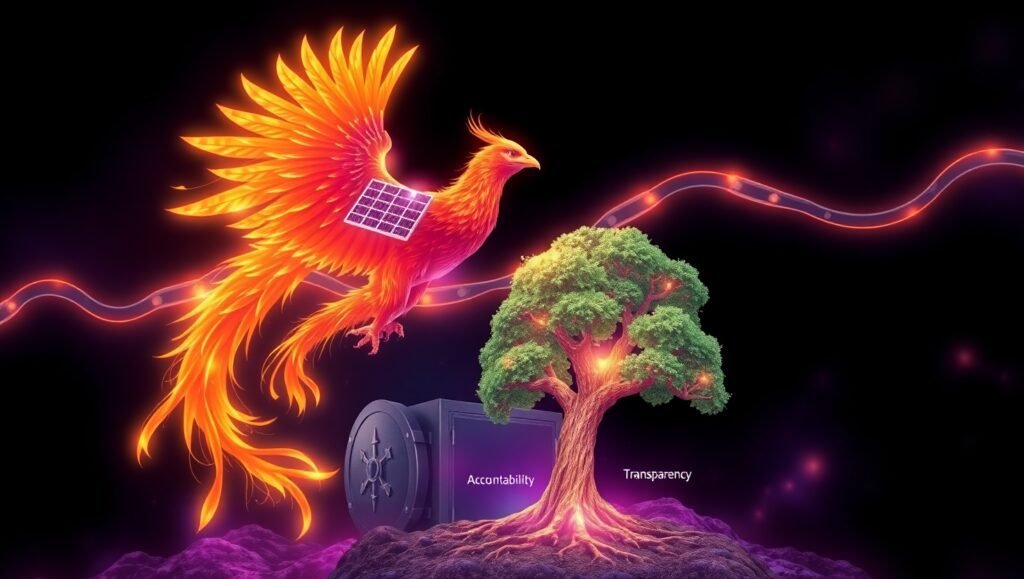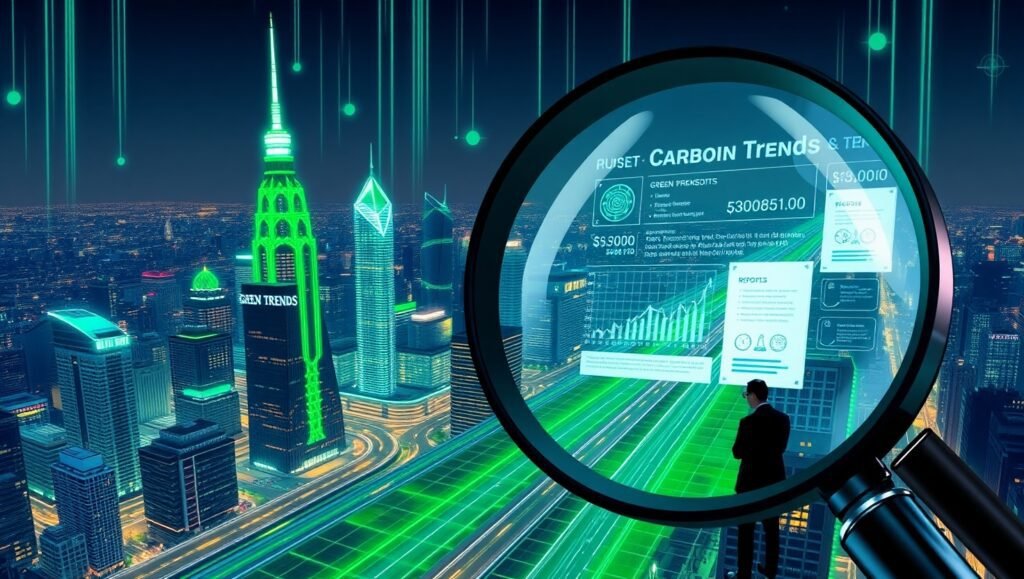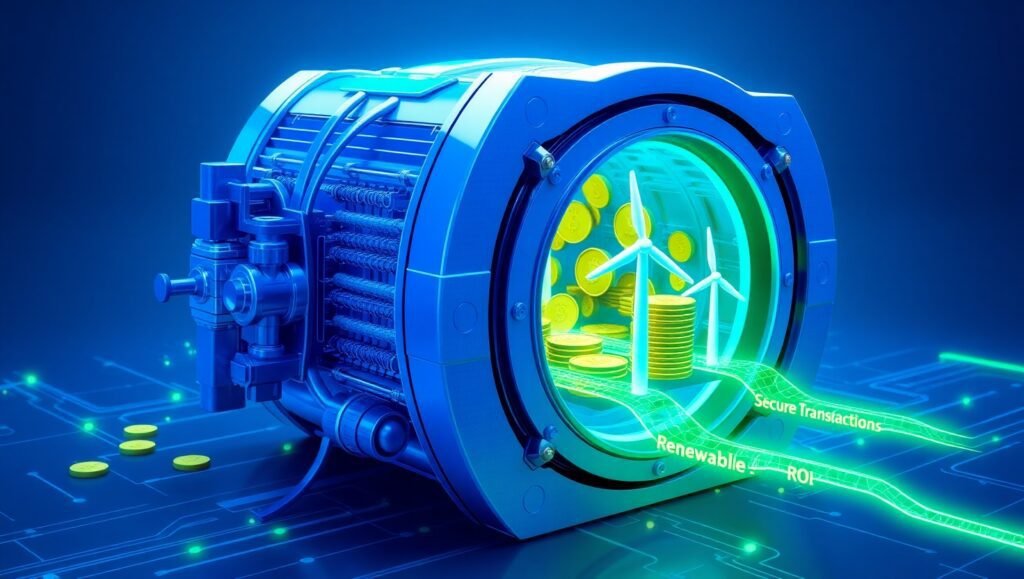Best Practices for Ecomoney Adoption: Revolutionary 10 Steps for a Sustainable Future

Best Practices for Ecomoney Adoption: Revolutionary 10 Steps for a Sustainable Future – Discover essential strategies for adopting Ecomoney, a sustainable finance model that merges eco-friendly practices with digital innovation.
In today’s fast-paced world, embracing innovative financial systems is key to securing a sustainable future. Ecomoney—a blend of eco-friendly practices with advanced digital technologies—offers a groundbreaking approach to finance.
It paves the way for investments that not only yield profit but also help protect our environment.
In this comprehensive guide, we walk you through the revolutionary 10 steps to successfully adopt Ecomoney and transform your economic landscape.
Introduction to Ecomoney and Its Importance
In the modern economy, traditional financial systems often fall short when it comes to addressing environmental challenges and promoting sustainable growth.

That’s where Ecomoney comes in. Ecomoney isn’t just a buzzword; it’s a transformative approach that fuses financial efficiency with eco-conscious practices.
By adopting Ecomoney, businesses, communities, and individuals can generate sustainable returns while actively contributing to environmental preservation.
What Makes Ecomoney So Critical?
Ecomoney is essential because it shifts the focus from short-term gains to long-term stability. Traditional financial models often ignore the environmental costs of economic activity, leading to unsustainable practices.
Ecomoney corrects this by integrating eco-friendly criteria into investment decisions. This approach encourages green projects, reduces carbon footprints, and fosters a more resilient economy.
Moreover, Ecomoney leverages cutting-edge digital technologies—like blockchain and advanced data analytics—to create a transparent, secure financial ecosystem.
These technologies ensure that every transaction is traceable and that investments align with sustainable practices.
The result is a financial system that promotes accountability, builds trust among stakeholders, and adapts to the dynamic demands of our global economy.
The Broader Impact
Adopting Ecomoney is more than just a financial decision; it’s a commitment to a sustainable future.
For businesses, it means access to new markets and opportunities that are increasingly favored by consumers and investors alike.
For communities, Ecomoney can drive local economic development while ensuring that environmental health is prioritized.
And for policymakers, it represents a strategic move towards a more balanced and resilient economic framework.
The benefits of Ecomoney extend across the board, making it an attractive model for anyone who values both financial success and environmental stewardship.
With this guide, we aim to demystify the process and show you how to implement Ecomoney step by step.
Defining Ecomoney: A New Era in Sustainable Finance
Ecomoney represents a revolutionary shift in how we approach finance.
It’s about blending traditional economic principles with modern sustainability practices to create a system that supports both growth and ecological balance.

What Is Ecomoney?
At its essence, Ecomoney combines smart investment strategies with sustainable practices. It focuses on:
- Sustainable Investments: Channeling funds into projects that benefit both the economy and the environment.
- Digital Integration: Utilizing modern technology to ensure secure and transparent financial operations.
- Accountability: Promoting clear reporting standards so that every stakeholder understands where funds are allocated and how they are used.
In practical terms, Ecomoney means investing in renewable energy, green infrastructure, and eco-friendly technologies. It’s about recognizing that every dollar invested should contribute to a healthier planet and a more stable economy.
Key Benefits
- Long-Term Financial Stability: By prioritizing sustainable projects, Ecomoney creates a resilient economic system that can withstand market fluctuations.
- Environmental Impact: Investments are directed toward initiatives that lower carbon emissions and promote responsible resource management.
- Transparency and Trust: Leveraging digital tools like blockchain ensures every transaction is recorded and verifiable, building trust with investors and consumers alike.
Ecomoney isn’t just a theoretical concept—it’s a practical, actionable model that has the potential to reshape our financial systems for the better.
Its growing popularity among investors and policymakers is a testament to its effectiveness and potential.
Setting Clear Goals and a Vision for Ecomoney Adoption
Before implementing any new system, it’s vital to set clear, measurable goals.
With Ecomoney, the process starts by defining what you want to achieve from both an economic and environmental perspective.

Establishing Your Objectives
To begin, identify three core objectives:
- Financial Objectives: How do you plan to generate sustainable returns? What are your revenue targets?
- Environmental Objectives: What specific environmental benefits are you aiming for, such as reduced emissions or improved energy efficiency?
- Social Objectives: How will your initiative impact communities? Consider aspects like job creation and social equity.
By clearly outlining these goals, you create a roadmap that guides every decision throughout the Ecomoney adoption process.
Crafting a Compelling Vision
Your vision is your North Star. It should encapsulate your commitment to both financial success and environmental responsibility.
A strong vision statement motivates your team and reassures stakeholders that every action is aligned with a larger purpose.
For example, a vision for an Ecomoney project might be: “To build a sustainable financial ecosystem that drives economic growth while protecting our planet for future generations.”
Such a vision is not only inspirational but also practical, as it lays the groundwork for actionable strategies and measurable outcomes.
Aligning Goals with Strategies
Once your goals and vision are set, the next step is to align them with actionable strategies. This involves:
- Prioritizing Initiatives: Focus on projects that offer the greatest impact in both economic and environmental terms.
- Resource Allocation: Determine how you’ll allocate financial, technological, and human resources to meet your objectives.
- Performance Metrics: Establish clear metrics to track progress, such as return on investment (ROI), emission reductions, and social impact indicators.
By integrating these elements into your planning, you ensure that every aspect of your project is purpose-driven and measurable.
This clarity not only helps in execution but also builds confidence among investors and partners.
Conducting In-Depth Market Research for Ecomoney
Market research is the cornerstone of any successful project, and adopting Ecomoney is no different.
Understanding the current landscape is crucial for identifying opportunities and mitigating risks.

Analyzing Trends in Green Finance and Technology
Start by diving into the latest trends in green finance. This involves:
- Reviewing Industry Reports: Look at publications from sources like Investopedia to understand how green investments are evolving.
- Evaluating Technological Innovations: Assess how tools like blockchain, artificial intelligence, and big data analytics are transforming financial transactions.
- Monitoring Consumer Behavior: Observe how consumer preferences are shifting towards eco-friendly products and services, influencing market demand.
This analysis provides a comprehensive picture of the market, enabling you to tailor your Ecomoney strategy to current and future trends.
Assessing the Regulatory Landscape
Regulations play a pivotal role in shaping the financial ecosystem. In the context of Ecomoney:
- Study Local and National Policies: Understand the legal framework governing sustainable finance. Identify any incentives or subsidies for green investments.
- Evaluate Compliance Requirements: Ensure that your project aligns with existing regulations to avoid potential legal hurdles.
- Engage with Policymakers: Build relationships with regulatory bodies to stay informed about upcoming changes that might impact your project.
A thorough understanding of the regulatory environment not only helps in avoiding pitfalls but also opens up avenues for strategic partnerships with government agencies.
Feasibility and Risk Analysis
Conduct a detailed feasibility study to determine the viability of your Ecomoney project. This should include:
- Cost-Benefit Analysis: Estimate the financial returns against the costs of implementation, including technology, infrastructure, and compliance.
- Risk Assessment: Identify potential risks—economic, technological, and regulatory—and develop strategies to mitigate them.
- Stakeholder Feedback: Engage with experts, investors, and community leaders to get insights that can refine your strategy.
Armed with robust research data, you can make informed decisions that maximize the likelihood of success while minimizing unforeseen challenges.
Designing Your Ecomoney System: A Step-by-Step Blueprint
With clear goals and thorough market research in hand, the next step is to design your Ecomoney system.
This phase is all about building a digital and financial framework that’s both secure and sustainable.

Building a Digital Framework with Blockchain and Data Analytics
The backbone of your Ecomoney system should be its digital infrastructure. Here’s how to approach it:
- Blockchain Integration: Utilize blockchain technology to secure transactions. Blockchain’s transparency and immutability make it ideal for recording every transaction, ensuring trust among all participants.
- Data Analytics Tools: Implement advanced data analytics to monitor performance. These tools can help you track key performance indicators (KPIs) in real time and identify trends that can inform strategic decisions.
- System Interoperability: Ensure that your digital framework can integrate smoothly with existing financial platforms and technologies, enhancing overall efficiency.
This robust digital foundation not only secures your system but also provides the transparency and accountability necessary for a modern financial ecosystem.
Creating a Sustainable Financial Blueprint
Your financial blueprint should outline how investments will flow and how returns will be generated sustainably. Key components include:
- Investment Criteria: Define what qualifies as a sustainable investment. This could involve criteria such as low carbon emissions, renewable energy use, and positive social impact.
- Incentive Structures: Design incentives that encourage stakeholders to invest in green projects. Consider mechanisms like tax breaks, green bonds, or digital rewards.
- Transparent Reporting: Establish clear reporting standards so that every stakeholder knows how funds are allocated and what impact they are generating. Transparency builds trust and reinforces the credibility of your system.
By meticulously planning your financial strategy, you ensure that every dollar invested not only yields returns but also contributes to environmental sustainability.
Putting It All Together
Designing an Ecomoney system is a complex process, but breaking it down into these actionable steps makes it manageable.
Each component—from the digital framework to the financial blueprint—works in harmony to create a secure, efficient, and sustainable system that’s built for the future.
Building Infrastructure and Ensuring Compliance
A robust Ecomoney system needs solid infrastructure and a strict adherence to regulatory standards.
This section details how to build the necessary infrastructure and maintain compliance throughout the project lifecycle.

Establishing Robust Digital Infrastructure
Your digital infrastructure is the foundation of your Ecomoney system. To build a reliable infrastructure, focus on:
- High-Security Servers: Invest in secure servers and data centers that can handle high volumes of transactions without compromising data integrity.
- Scalable Platforms: Ensure your system is built on scalable technology that can grow with your user base and evolving market needs.
- User-Friendly Interfaces: Develop intuitive interfaces that make it easy for stakeholders—from investors to end users—to navigate the system.
A well-constructed infrastructure not only supports day-to-day operations but also prepares the system for future expansion and innovation.
Adhering to Legal and Regulatory Standards
Compliance is non-negotiable in any financial system. To stay on the right side of the law:
- Obtain Necessary Licenses: Secure all required licenses and certifications from relevant regulatory bodies.
- Conduct Regular Audits: Schedule periodic audits to ensure your system meets all legal requirements and industry standards.
- Transparent Practices: Adopt clear, transparent reporting and compliance protocols that make it easy for regulators to assess your system’s integrity.
Working closely with legal experts and regulatory agencies ensures that your Ecomoney system remains compliant, minimizing risks and building credibility among stakeholders.
External Collaboration for Compliance
Sometimes, partnering with external organizations can help maintain compliance. For instance, you might work with established financial institutions or certification bodies that specialize in sustainable finance.
Such collaborations not only enhance your system’s legitimacy but also provide valuable insights into best practices and emerging regulatory trends.
Engaging Stakeholders and Forming Strategic Partnerships
No innovative project can thrive in isolation. Engaging stakeholders and forming strategic partnerships is crucial for the successful adoption of Ecomoney.
This section explores how to identify and collaborate with key partners to drive your initiative forward.

Identifying Key Partners and Investors
Begin by mapping out the critical players in your ecosystem:
- Investors: Look for venture capital firms, banks, and angel investors who have a keen interest in green finance.
- Government Agencies: Engage with local, state, and federal bodies that offer incentives for sustainable projects.
- Community Organizations: Work with local groups to ensure your system addresses community needs and fosters social inclusion.
Identifying the right partners helps create a strong network that supports every phase of your project.
Building Strategic Alliances for Mutual Growth
Once you’ve identified potential stakeholders, focus on building long-lasting alliances:
- Collaborative Workshops: Host workshops and roundtable discussions to exchange ideas and build trust.
- Shared Resources: Pool resources, from technology to market insights, to benefit all parties involved.
- Mutual Benefits: Ensure that every partnership is structured so that both sides gain value—whether through financial returns, technological innovation, or social impact.
Strategic alliances can accelerate the adoption of Ecomoney by leveraging the strengths and expertise of diverse stakeholders.
Developing an Implementation Roadmap and Pilot Phase
Planning is crucial to the successful rollout of any new system.
In this section, we discuss how to develop a detailed roadmap, execute a pilot phase, and gather feedback to refine your Ecomoney adoption strategy.

Crafting a Detailed Roadmap with Milestones
A roadmap serves as your project’s blueprint. It should include:
- Clear Milestones: Outline specific stages of development, from initial setup to full-scale deployment.
- Timelines: Establish realistic timelines for each phase, ensuring steady progress without rushing.
- Responsibility Matrix: Define who is responsible for each task to promote accountability and smooth execution.
A well-structured roadmap keeps your project on track and provides a clear vision for all involved.
Running a Pilot Test and Gathering Feedback
Before a full-scale rollout, testing your system on a smaller scale is essential:
- Pilot Phase: Launch the system in a controlled environment to assess its performance.
- User Feedback: Collect feedback from early adopters to identify strengths and areas for improvement.
- Data Analysis: Use real-time data analytics to measure performance metrics such as transaction speed, user engagement, and environmental impact.
By iterating based on feedback, you can fine-tune your system, ensuring that it meets all expectations before a broader launch.
Full-Scale Deployment and Continuous Monitoring
After a successful pilot, it’s time to expand your Ecomoney system to a wider audience. Full-scale deployment must be managed carefully to maintain quality and performance.

Rolling Out the System Gradually
A phased rollout helps manage risks and allows for adjustments:
- Step-by-Step Expansion: Gradually increase user numbers and geographical coverage.
- Comprehensive Training: Provide thorough training for all users to ensure smooth adoption.
- Targeted Marketing: Launch marketing campaigns that highlight the benefits of Ecomoney to attract a diverse user base.
Using Data Analytics for Ongoing Optimization
Continuous monitoring is key to sustaining success:
- Real-Time Dashboards: Implement dashboards that track key metrics and alert you to any issues.
- Regular Audits: Conduct regular audits to verify system integrity and compliance.
- User Surveys: Keep an open channel for user feedback to identify potential improvements.
Ongoing optimization ensures that your system remains responsive to market changes and continues to deliver on its promise of sustainable finance.
Embracing Continuous Improvement and Innovation
The journey of adopting Ecomoney is never truly finished. To stay ahead, continuous improvement and innovation are essential.

Investing in R&D and Collaborative Innovation
Fostering a culture of innovation helps your system evolve:
- Research and Development: Dedicate resources to exploring new technologies and sustainable practices.
- Collaborative Projects: Partner with academic institutions and industry experts to stay updated on the latest trends.
- Innovation Hubs: Establish internal teams or labs that focus on iterative improvements and creative solutions.
Adapting to Future Economic and Environmental Changes
The future is unpredictable, so your system must be adaptable:
- Scalability: Ensure your system can handle growth and increased demand without sacrificing performance.
- Resilience: Build robust security and backup protocols to safeguard against cyber threats and economic downturns.
- Flexibility: Stay open to updating processes and technologies as new trends emerge, ensuring that your system remains cutting-edge.
By embracing continuous improvement, you create a dynamic system that not only meets current needs but is also prepared for future challenges.
Conclusion: The Future Impact of Ecomoney Adoption on Sustainable Finance
Adopting Ecomoney isn’t just about updating your financial system—it’s about transforming the way we think about money and sustainability.
With clear goals, robust digital infrastructure, strategic partnerships, and continuous innovation, Ecomoney paves the way for a future where economic growth and environmental protection are intertwined.

By following these revolutionary 10 steps, businesses, communities, and individuals can build a financial ecosystem that is both profitable and sustainable.
The journey may seem challenging at first, but with careful planning, rigorous testing, and a commitment to continuous improvement, the rewards are well worth the effort.
Ecomoney represents the future of finance—one where transparency, innovation, and sustainability drive progress.
As you embark on this journey, remember that each step taken towards Ecomoney adoption is a step towards a more secure and sustainable future.
Embrace the change, and let Ecomoney transform your approach to finance for the better.


